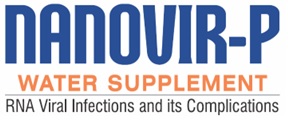Control of Fowl Cholera
Chronic diarrhoea related disease
E coli and Salmonella sp. And mixed bacterial infection control
GUTACT+, Carbon Quantum Dots (CQD) Technology for Effective control of Fowl Cholera, Coryza and Early Chick Mortality
Fowl cholera is a contagious bacterial disease of birds. Pasteurella multocida, the causal agent of fowl cholera, is a small, gram-negative, nonmotile rod with a capsule that may exhibit pleomorphism after repeated subculture. Subspecies multocida is the most common cause of disease, but septica and gallicida may also cause cholera-like disease. Chronically it causes lameness, swollen wattles, pneumonia, torticollis and some time it is asymptomatic.
Chronically infected birds and asymptomatic carriers are considered to be major sources of infection. Spread of P multocida within a flock and between houses is primarily by excretions from the mouth, nose, and conjunctiva of diseased birds that contaminate their environment. In addition, P multocida survives long enough to be spread by contaminated crates, feed bags, shoes, and other equipment. The infection does not seem to be egg-transmitted. In chronic fowl cholera, signs and lesions are generally related to localized infections of the sternal bursae, wattles, joints, tendon sheaths, and footpads, which often are swollen because of accumulated fibrinosuppurative exudate. There may be lameness, as well as exudative conjunctivitis and pharyngitis. Torticollis may result when the meninges, middle ear, or cranial bones are infected.
Poultry are affected with different degrees of morbidity and mortality, which may vary according to the species of bird, health status, environmental factors or management as well as pathogenic differences between P. multocida strains. Some strains, very virulent in primo-isolation, often lose their virulence when they are successively cultivated in artificial media (in vitro passages attenuation). On the other hand, successive passages in susceptible birds (in vivo) make these same strains reacquire their initial pathogenicity.
Chronically infected flocks it is common to administer treatments with antibiotics and, although mortality may be temporarily stopped, the flock continues to be infected. Treatments usually give variable results, depending mainly on the drug used and the virulence of the acting strain in the outbreak. Due to antibiotic resistance, it is challenging to control these infections.
Proven essential oils phytochemicals are potentiated with Carbon Quantum Dots (CQD) doping which can provide resistance free option to control these infections. The use of essential oils had a good effect on performance, weight gain, immune response and decreasing the loads of infected chickens. A product mixture of essential volatile oils was tested experimentally for evaluation of its effect on Salmonella sp. and Escherichia coli (E.coli) experimental infection. Later these essential oils are loaded with Carbon Quantum Dots (CQD) to enhance its activities.
Mechanism of action
Unique options for bacterial infection control
• Active herbal compounds, unique trace minerals and its delivery to cellular level helps to control E coli and Salmonella multiplications and boost immune system for better recovery from bacterial infections.
• Essential oils and other herbal active phytochemicals are known for control and has not been reported for any resistance.
• Carbon Quantum Dots (CQD) is recently known to doped with essential oils and phytochemicals to enhance activity several folds for effective control of infection.
Clinical trials
• Completed field trial with CCRD
• Reported 90% reduction of infections in 3-5 days
• Seven to ten days treatment provided 0% mortality
• Feed intake normal and regain growth
Dosage
Treatment program:
Water – 1:2000 dilution to everyday for 7-10 days
Prevention program:
Water: 1:5000 dilution to everyday water
Prevention and treatment
E coli and Salmonella sp. infection
Fowl Cholera, Coryza and Early Chicken mortality







